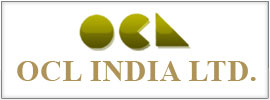Organization Culture: The World’s Favourite Double Edged Sword
“Our culture is our biggest asset” – This oft repeated, well intentioned statement has basked in the warm winter sunshine of management wisdom for the best part of two decades now. And not without reason – there are numerous examples of organizations making discontinuous leaps, creating disproportionate value, as a result of diverse practices and norms rooted in a distinctive organizational culture. In fact such has been the rise of ‘Culture’ in the annals of corporate folklore, it isn’t surprising that it has successfully graduated from being an HR term to become an active part of leadership vocabulary across geographies and industries.
So much so that it has, at least in general usage, slowly become a broad expression that captures everything without conveying much; a convenient catch-all in today’s glib, PR-savvy business environment. And therein one sees the double edge emerge.
Organization Culture has been defined differently by different people, focusing on diverse aspects of this broad based construct. Some intuitive definitions from the 2013 Harvard Business Review article ‘What Is Organizational Culture? And Why Should We Care?’ include:
- “Culture is how organizations ‘do things’.”
- “Organizational culture defines a jointly shared description of an organization from within.”
- “Organizational culture is the sum of values and rituals which serve as ‘glue’ to integrate the members of the organization.”
- “Culture is the organization’s immune system.”
What remain common to all these definitions, are the following fundamental characteristics (borrowed from the domain of strategic management):
- Path Dependence: The present state is determined intricately by the path taken thus far; current alternatives are limited by past decisions
- Causal Ambiguity: The causes of success/ today’s observed state are not evident; many factors may have impacted the situation, but pin-pointing a specific mix of the different factors is not possible
- Social Complexity: Inherently any organizational setup involve numerous entities (many employees, technologies, systems, etc.), and the number of interconnections and relationships increases exponentially
In the context of strategy and sustainable competitive advantage, the above characteristics make the unique culture of an organization difficult to replicate for competitors – which is good. However, turning the lens inwards, what this also means is that it is very easy for culture to emerge by default, without the leadership and HR necessarily knowing what input elements led to which observed outcomes. In such a scenario, to tout one’s culture as a key differentiator and strength without knowing its determinants, i.e. without having any control over it, is like riding a tiger – unpredictable, and therefore unsustainable.
Its aforementioned fad-like popularity, together with the predominantly black box like understanding, is what makes Culture a potent, powerful double-edged sword for organizations today.
Where does that leave us?
Does this mean that Culture as a source of competitive advantage is doomed to be unsustainable? The answer, as to most questions of life, is Yes and No.
Yes, in the context of how it is part of the popular bandwagon today. Used loosely, it translates to celebrating and reinforcing what seems to work in the good times, while blaming downturns on the environment/ specific events. Such a myopic view of Culture renders it fickle and far removed from the foundational potential it possesses as a concept.
To turn the above answer to a ‘No’, it is essential that business leaders and HR imbibe and actively apply two traits as values, not necessarily for the entire organization, but at least for themselves in their capacity as custodians of the organization:
- Keeping things real: Vision, Mission and Value statements have their place in driving alignment and building culture. However, it is essential that organizations remain conscious and aware of the myriad changes impacting them, and thus the de facto culture, directly and indirectly. To say one thing and live by another is chronic among most corporates; but the point where rhetoric gives way to delusion, is one which management must constantly appraise themselves and the organization against.
- Longitudinal reflection: To be truly able to keep a pulse on and track the evolving cultural fabric of an organization, it is critical that all decisions and events are analyzed in a longitudinal, drawn out manner, across the four dimensions of:
Keeping things real also means staying abreast of the latest in the environment, for no entity exists in isolation on today’s networked, globalized world.
- Depth: How the change will impact the organization across levels
- Breadth: How the change will impact the organization across functions
- Environment: How the change stacks up against current and expected developments in the environment
- Time: The expected and foreseeable impact today, tomorrow and beyond
Such rigour in reflection and analysis is barely commensurate to the subliminal and volatile nature of organization culture, being as it is the aggregate of individual psyches and traditions, punctuated by lasting organizational symbols and artifacts.
Being thus armed with an evolved sense of awareness and a deeper perspective on the living reality of the organization, is the only way to be able to mould, steer, and actively leverage one’s organization culture for sustainable competitive advantage.
– Anand Justin Cherian
Consultant, Inqubex Consulting































